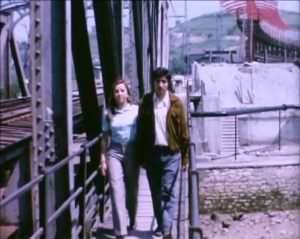
Un joven evoca su pasado en el que pierde a su esposa en un accidente de automóvil. Lleno de dudas, decide reunirse con ella.
A young man remembers the loss of his wife due to a car accident. Filled with doubt, he decides to reunite with her.
"A German airman is boarding at a house in England. The landlady tells him about her daughter's death; she was killed in an air raid on her seventeenth birthday. As he hears the story, he remembers that day and that he was dropping bombs on the area. When he sees her portrait, he runs from the house and the landlady's son Rudolph runs after him. He chases him across the clifftops and the German sees a vision of the daughter. He tries to embrace her but stumbles and falls off the cliff. Rudolph also sees his sister, they laugh, embrace and he throws stones at the German who is clinging to a tree root. Rudolph's vision disappears and he runs down to rescue the German but he is already dead" (BFI online).
"Mr Terence L. Greenridge writes to tell me that the film “Afterwards”, for which he and his wife Nora [Pfeil] Greenridge, are jointly responsible, has been taken back for the sake of certain additions, previous for general release to amateur societies. Mr Terence Greenridge is better known in the amateur film movement as the first filmmaker in Oxford University, and as author of the recently published “Degenerate Oxford!” For some time he has been a leading light of the London A.C.A. Mr Terence Greenridge did the secondary jobs of “Afterwards”, such as scenarising, choosing locations, and working out camera angles. This film, which had a particularly successful premiere at the London A.C.A.’s public show, is not merely the London A.C.A.’s most ambitious production for 1930, but is also something rather new in cinematography, whether professional or amateur. It has something of that imaginative audacity for which I have already pleaded, and it is, very largely, the work of a woman."
"Telling Situations - In too many cases a film has to attempt to justify a conventional plot. In this case the plot makes the film. Nora Greenridge, who wrote the story, possesses a natural instinct for a telling situation: even when, as in this case, the theme came to her in a dream. In “Afterwards” there is nothing of the sentimental, conventional world of nine films out of ten, where the hero is never allowed to die unless it is obvious that life has not more to offer him. The good looking hero of “Afterwards” dies at the prime of life, full of vitality, and in “Afterwards” the dramatic conflict is between man’s muddle-headed kindliness and the precise retribution of the supernatural world: so precise that, on occasion, it can become cruelty. The film is not calculated to induce placid happiness in an audience, but rather to challenge them to think about the deeper problems of life. Treatment has been subordinated to theme. There is no stunting in this film. Camera-angles and backgrounds were selected in so far as they might elucidate the episode which was being pictured, and not for intrinsic excellences that they might posses in themselves. The beauty of the English countryside finds expression in “Afterwards”, but Nora Greenridge has utilised it in a purposeful manner, understanding how grim events become twice as grim, if they happen in beautiful surroundings."
“Happy Ever After - Nora Greenridge not only wrote the story and directed its production, but played a part, to quote one of the critics, “with sylph-like grace”. Mrs Greenridge, or Nora Pfeil as she used to be, is an attractive blonde and has played several leading roles in London A.C.A. productions. She has also won many awards in scenario competitions. She became engaged to Terence Greenridge a quarter of the way through the production, and halfway through the production their marriage took place. Now they have a house called “Afterwards”—a happy and true modern version of the age-old fairy-tale ending" (M.A.L.B. 1931, 9).
"One of the films being shown [as part of the All-English Amateur Film Week] has been referred to as the most ambitious production of 1930. Produced by Terence Greenridge, better known as an author, directed by Miss Nora Pfeil, who has since become Mrs Greenridge, “Afterwards” is certainly a film none should miss. Plots should not be given away in advance, so let it be said that a German Professor came to England in 1928 on a geological holiday. He settled down with an English family, the daughter of which had been killed in an air-raid over London ten years previously, and the son rendered neurotic. The family generally “took to” the German, who was a sociable enough fellow. They forgot the war, but as the tenth anniversary drew near—It is a film well worth seeing" (Anon 1931, 9).
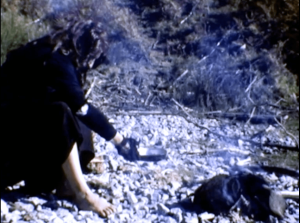
Una mujer camina por el paisaje entre ruidos. Hace fuego para calentarse un poco de comida pero un sonido la invade. Se encuentra con un soldado muerto dentro del bosque.
A woman walks through a landscape while noises are heard. She makes a fire to warm some food but a sound overcomes her. She finds a dead soldier inside the woods.
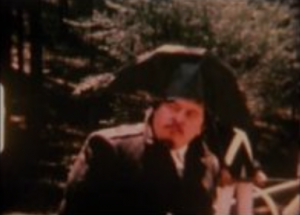
"Se trataba del regreso de un soldado de origen mexicano a la Ciudad de México después de haber combatido en Vietnam con las tropas estadounidenses. El hombre llega a la estación del ferrocarril de Buenavista y recorre la ciudad para acabar finalmente en el departamento de su hermano. Busca trabajo y no lo encuentra. Por la voz off que sigue el hilo de sus pensamientos, nos enteramos que a su mente guerrera le cuesta trabajo adaptarse a la vida pacífica. La película intercala una serie de secuencias oníricas que de alguna manera ilustran su delirio belicista: sueña que es un soldado griego que asesina al niño que lo molesta en el taxi colectivo (un pesero) que lo conduce a casa de su hermano; imagina en el personaje que lo entrevista cuando aplica para obtener un trabajo a Napoleón Bonaparte (interpretado por Juan José Gurrola) dirigiendo una batalla; o sueña que es un caballero medieval que asesina a su familia en un pacífico día de campo. Finalmente el personaje no encuentra cabida en la sociedad pacífica y acude –todavía en traje de caballero medieval – al aeropuerto para comprar un boleto de avión "a la guerra más próxima"" (Vázquez Mantecón, 2012).
"It is about the comeback of a Mexican soldier to Mexico City after fighting in Vietnam along with American troops. The man arrives to the train station in Buenavista y goes around the city to end up at his brother's apartment. He looks for a job and cannot find one. The off voice, that follows his train of thought, tells us that his war mind has trouble adapting to a peaceful life. The film inserts a series of dreamlike sequences that in a way illustrate his war delirium: he dreams he is a greek soldier that murders the kid that bothers him in a collective cab that drives him to his brother's house; he imagines the character that interviews him when he is looking for a job is Napoleon Bonaparte (played by Juan José Gurrola) directing a battle: or he dreams he is a medieval knight that murders his family in a peaceful day in the country. Finally the character doesn't find a place in a peaceful society and goes –still in medieval armor– to the airport to buy a by a plane ticket to the "nearest war" " (Vázquez Mantecón, 2012).
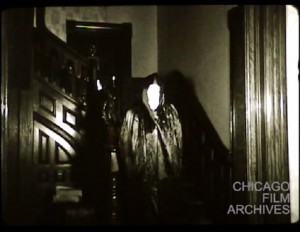
"A short mystery film from members of the Amateur Cinema League. A group of relatives gather in a haunted house for the reading of a will. Someone among them knows a secret about the house, and uses stories about the Black Widow to try and scare everyone away. In the end, their identity is revealed and all the secrets come to light. Title cards narrate the dialogue." Chicago Film Archives.
"Inspired by a family funeral, three children in Cockermouth, Cumbria, give the recently deceased 'Jackdaw' a dignified send-off. Heather Harris, the youngest child, officiates as a priest. Sadly, no-one can now remember whether the deceased was a family pet or just a wild bird found in the garden, but this film remains as a fleeting, yet touching, picture of a moment in childhood" (BFI Player).
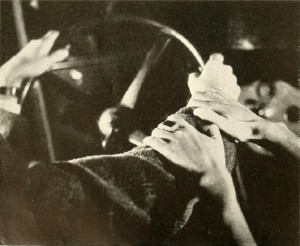
"The producers of 'Chronicle' must be commended for a novel treatment. They employed the hands only to show the life of a boy from his third birthday until maturity. Into this novel treatment they spun a story of the boy's downfall until he is found guilty of murder and is incarcerated. All of it was interior and was well photographed." American Cinematographer, Jan. 1936, 40.
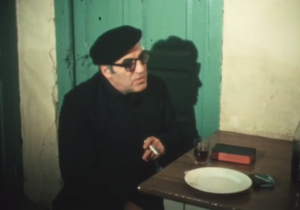
Un cura preocupado de que una pareja viva en el mismo hogar sin estar casados, pide un milagro. Reza para que alguien en la pareja se enferme a fin de que valoren la vida y entiendan la necesidad de seguir los preceptos de su religión.
A priest concerned with a couple living together without being married, asks for a miracle. He prays for someone in the couple to become ill so that they will value life and the need to follow the precepts of religion.
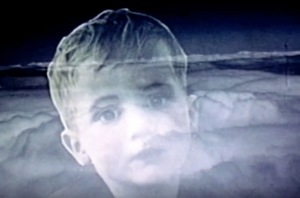
"Dear Little Lightbird was entered as an experimental film by Leland Auslender, who also won one of the four top awards in the Class C category. He has a way with color, light and angles, and this talent easily put his film in the Top Ten. It's a story of a little boy born with an incurable disease, and how his three years of life brought into focus all the wonders of nature and this world around us. Perhaps this 18-minute film could be shortened somewhat, but it doesn't seem to matter for the film surrounds you with unusual shots of the simple things most of us miss in the helter-skelter of everyday life" PSA Journal, Oct. 1968, 49.
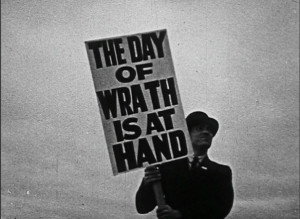
"Science fiction film influenced by the style of inter-war European art cinema." East Anglian Film Archive.
"Each year the contest sponsored by the American Society of Cinematographers through this magazine seems to bring forth a surprise. For several years the 8mm cinematrographers have been setting the pace, but never has any of them reached the goal achieved this year by Miss Ruth Stuart. Miss Stuart has been a contributor to this contest every year for the past three years; in 1933 she was given the medal for travel pictures. Her 200 ft. 16mm subject 'Doomsday' was also awarded honors in the British Institute of Amateur Cinematographers. In the American Society of Cinematographers contest just closed she was given a recognition for the Outstanding picture, in photography and Documentary pictures. It will be surprising to many that this unusual honor should befall a woman. Photography, by the unwritten law, is supposedly the realm of male species. Miss Stuart, however showed such a fine understanding of the value of pictures that move, how to fabricate these moving photographs into an interesting document that would hold any audience anywhere in the civilized world. For a person who films she must have developed a stony heart in order to cut as judiciously as the picture indicates. There is a tempo to the production that is very seldom achieved by an amateur. There are no obvious pet shots or scenes. Each sequence, each scene, each picture was left in production for a purpose to give it atmosphere to help the story along." American Cinematographer, Jan. 1937, 25.
"Well photographed, well planned film dealing with the contrasted fears of town and country folk and their reaction to catastrophe" (IAC 1975).
‘A fantasy based upon a fear which has preyed upon credulous minds from the beginning of time' is the maker's description of this ambitious attempt to show how people react to the possibility of a catastrophe and then to the real event. The story hinges upon a cosmic event that upsets the Earth's equilibrium, causes an imbalance of weather conditions and other natural forces, resulting in widespread panic’ (EAFA Database)."
Total Pages: 5